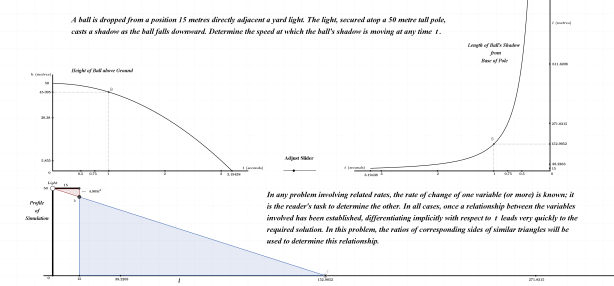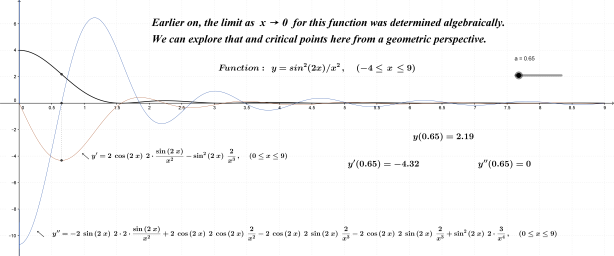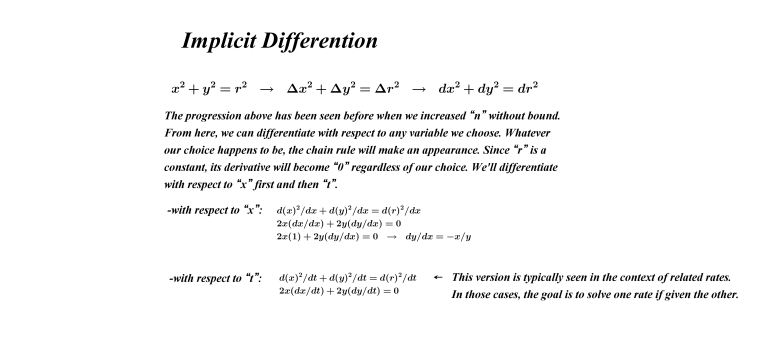Projectile motion is a natural fit and provides an interesting application in the introduction of calculus at the high school level. A previous post focused on calculating the horizontal velocity of a ball rolling off the end of a table; this entry takes things a bit further by launching projectiles at various angles to determine the maximum horizontal travel.
Before lighting the fuse on our launching device, some important theory should first be dealt with. Since our launch angle will be somewhere between 0° and 90°, the projectile’s travel will be directed both vertically and horizontally. Since these values will be dependent on the angle with which the projectile is launched, expressions for distance traveled in terms of that angle will be required. These calculations are shown directly below.
Projections of Velocity

The maximum of the horizontal component of a projectile’s motion occurs when its vertical component has been fully depleted. Since these two conditions occur simultaneously, our work will be straight forward. A new function representing the projectile’s height at any position “x” can be easily determined; x-intercepts of this new function will then lead us to the desired solution.
Analytical Solution

The following is a geometric representation of the analytical solution shown above. The graph on the left shows the projectile’s height as a function of its horizontal position “x”. The second graph measures height over time.
Maximum Horizontal Travel

Click on the link provided here to interact with projectile motion and discover maximum horizontal travel.
The scenario directly below is supplementary to a previous entry describing a ball rolling off a table. It is included here with the intent of having students further explore the behavior of projectiles launched horizontally from various heights.
Horizontally Launched Projectile

Click on the link provided here to explore horizontally fired projectiles with variable height and velocity.
The image and link directly below show how far a baseball would travel with zero drag from air-resistance. The initial launch angle and height have been set to 35° and 1 m respectively. The launch angle can vary greatly and still constitute a baseball scenario; the same cannot be said for the launch height. I decided to leave that variable visible to provide another option for further exploration.
Theoretical Flight of a Baseball (and more)

Click on the link provided here to explore the path of a baseball assuming zero drag from air-resistance.
The following links verify the accuracy of the model used above and also provide additional insights into the flight of a baseball.
The Science of Baseball: What Is The Farthest Home Run?
Baseball Physics: Anatomy of a Home Run
Conclusion
Each year, Major League Baseball provides many satisfying projectile launches; the most gratifying (for me) occurred in the 1988 post-season. For a reminder of this moment in time, click on the link provided here to witness what I consider to be the greatest projectile launch of all time……….I love baseball.
Thanks for reading.



























